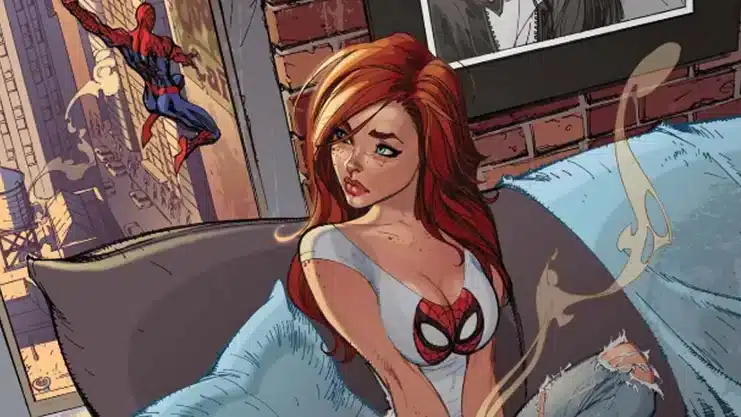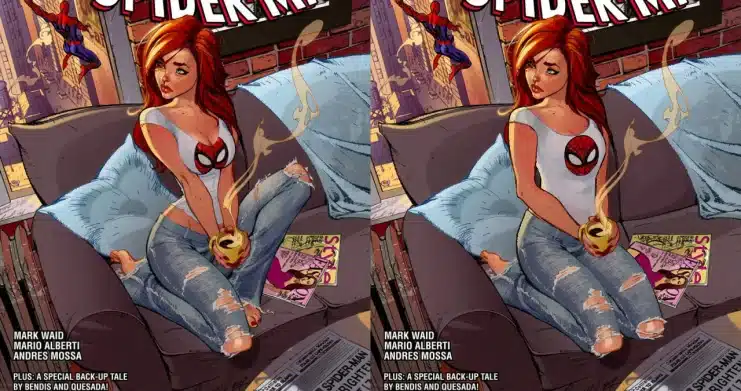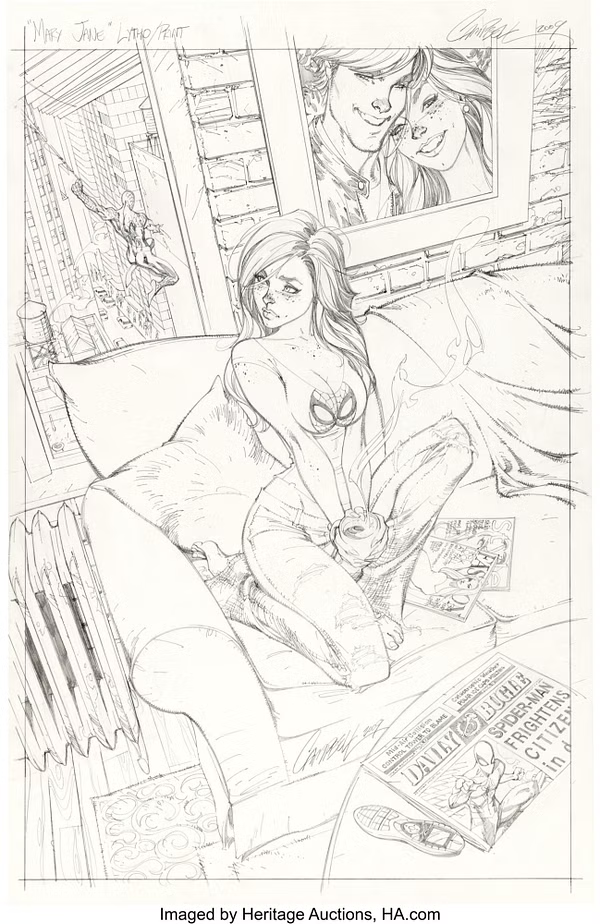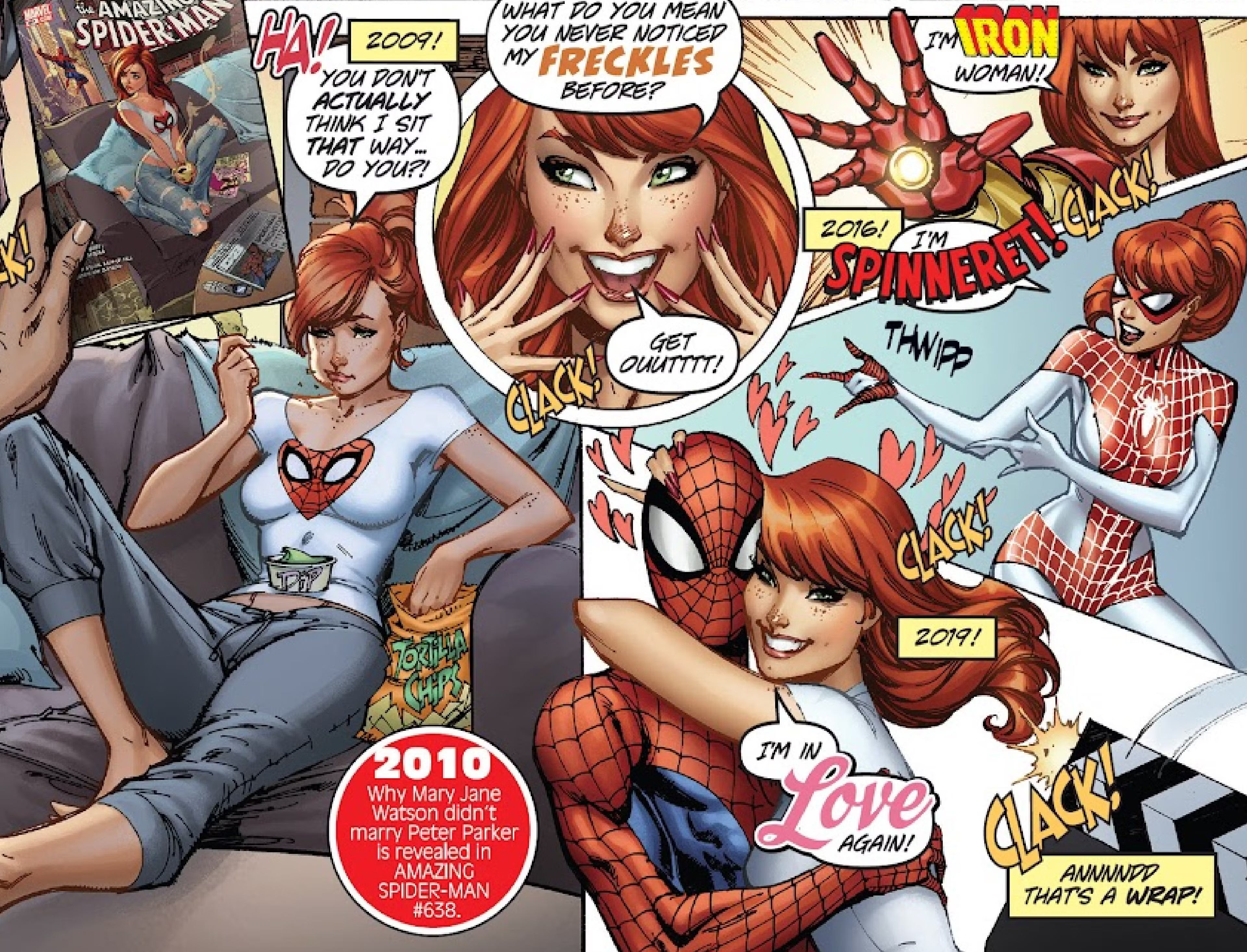
The controversial cover of Spider-Man #601 has made a splash at auction Heritage Auctions for a price of $144,000

The art that has fascinated and divided fans
The cover, known for its depiction of Mary Jane, has been criticized for the way it portrays female characters in comics. CalebH, senior editor at G33k P0p, expressed his distaste for this art, pointing out that Mary Jane, one of the strongest supporting characters in the Spider-Man universe, is shown here constantly worrying about her husband and nothing else. This image perpetuates a problematic view of women, often depicted from angles that overly and unrealistically emphasize their physical attributes.
Despite the criticism, Campbell’s influence on comics culture is undeniable. Even ten years after its release, Campbell revised this pose Marvel Comics #1000, where Mary Jane adds her commentary on the performance. This revision could be seen as Campbell’s attempt to dialogue with his critics and adapt to a more conscious era of gender representations.
A controversial but profitable legacy
The sale of this artwork not only highlights Campbell’s skill as an artist, but also the complexity of his legacy in the world of comics. Campbell’s work, including the above cover, has also been used in lithographs, reflecting his popularity and continued relevance.


The controversy has only fueled a much-needed dialogue about how the media portrays women. The “Hawkeye Pose” meme, for example, highlights this criticism by replacing exploitative images of female characters with Hawkeye, highlighting the disparity in gender treatment in superhero representations.
Delving deeper into Mary Jane Watson’s legacy
Mary Jane Watsonshe’s more than just a love interest for Spider-Man, she’s evolved significantly since her comic book debut. Introduced in “The Amazing Spider-Man” #25 In 1965, Mary Jane stood out for her vivacious personality and her famous catchphrase: “Face it, Tiger… you just hit the jackpot.” Over the decades she has been a model, actress and entrepreneur, breaking the mold of the damsel in distress and transforming herself into a figure of empowerment female.
In comparison, characters like Lois Lane DC Comics has followed similar trajectories, moving from being mere romantic interests to complex and protagonists in their own stories. This change reflects a evolution in comics narrative, which seeks to offer richer and more varied representations of its female characters, challenging traditionally assigned roles and promoting a more included and fair in the comic book universe.
Where is the comic going?
While Campbell’s original art continues to fetch exorbitant prices, the debate over adequate and respectful representation lives on, prompting artists and fans to reflect on the impact of these images on social perception. This cover not only marked an era but also triggered an important question about the standards of representation in comic art.


The auction of the cover of Amazing Spider-Man #601 is not only a testament to Campbell’s talent, but also a mirror of the cultural tensions that continue to challenge the world of comics today. As audiences and creators evolve, so too does the dialogue about what constitutes fair and respectful representation in art.